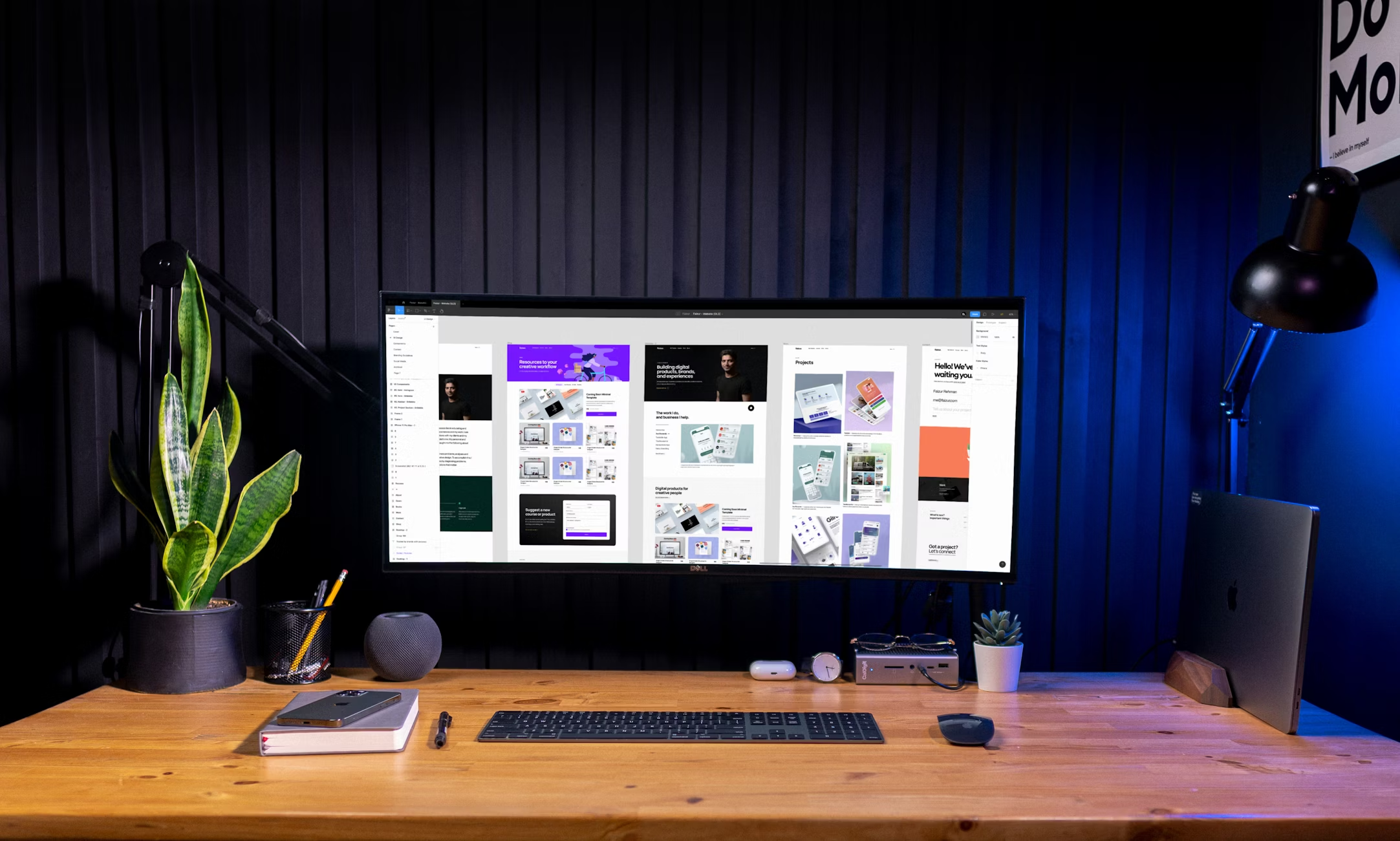Modern platforms like Webflow solve part of that equation. It removes a lot of the engineering friction but also raises the bar on how a site should be built. But it takes the right Webflow web design agency to make it happen. The right partner does more than translate Figma into pixels. Rather, they design for scale, performance, governance, and long-term operability.


Why Work With a Webflow Web Design Agency?
Short answer: Webflow equips you with powerful tools to move fast; an agency ensures your website has the strategy, structure, and scalability to go the distance.
Why it matters (technical takeaways for experts):
- Design systems, not one-offs: A good agency builds reusable components so updates ripple across the site instead of breaking in random places.
This prevents design debt and keeps everything scalable.
- CMS architecture that won’t implode: When you’re planning thousands of blog posts, multi-reference relationships, or multiple content types, you need a solid collection model and predictable field types.
Webflow’s CMS is powerful, but its structure must be designed intentionally, which agencies usually excel at.
- Performance you can measure: Webflow’s managed hosting (global CDN, staging, TLS, and enterprise-grade features) gives a strong baseline, but performance engineering still matters.
- Core Web Vitals are part of the search and UX story, and an expert agency can capably supply a performance plan and baseline Lighthouse/PageSpeed audits.
- Fewer cross-team roadblocks: For enterprise projects, you’ll need staging, branching, role-based permissions, and private staging.
An experienced Webflow web design agency will set those up and document them so marketing can iterate without breaking production.
- Faster time-to-value: An agency with repeatable component libraries and CI-like review workflows will consistently excel in velocity, without sacrificing quality.
Quick checklist (what to ask on first call):
“Show me your component library or class naming strategy.”
“Can you produce a CMS collection map for my content model in 48 hours?”
“What’s your Core Web Vitals baseline and mitigation plan?”
“How will you connect forms, CRM, and analytics? (Which integrations + patterns?)”
Let’s understand how a Webflow web design agency, like Flowout, can help your website stand out with an example:

Meridia is a digital platform that simplifies land investment and ownership. To align their brand vision with a scalable digital presence, they partnered with Flowout, seeking Webflow design and development support.
Flowout delivered a bold, future-ready website in just two months. The team implemented a reusable component system, structured the CMS to accommodate long-term content growth, and optimized site performance with Core Web Vitals benchmarks.
The result: A high-performing Webflow build that provided Meridia’s marketing team with the flexibility to expand quickly without technical bottlenecks.
Hiring a Webflow Design Agency: Key Considerations
The ideal way to go about it is: Don’t hire based on looks.
You need to ask precise, technical questions that reveal whether the agency builds for operations, not for the portfolio. As we’ve already addressed some of the common questions above, let’s dive straight into learning key parameters that can (and should) influence your decision-making:
Certifications & Partner Status
Being a certified Webflow Partner or having an Enterprise designation is meaningful. It indicates the agency has been vetted and works on larger-scale projects that require governance and security controls.
Before paying up any Webflow agency, check which partner certifications they have and how those actually helped past clients.
End-to-end Service Scope (and exclusions)
A vendor that only “does Webflow” can still leave gaps: migrations, 301-redirect mapping, analytics validation, SEO metadata, and integrations must be handled or explicitly scoped out.
You need to confirm they will:
- Deliver a redirect matrix and CSV import plan (Webflow supports CSV imports for 301s).
- Audit and implement structured data (JSON-LD) and canonical rules.
- Ensure analytics tracking (Google Analytics, GTM, GA4, or other platforms) is properly validated.
- Configure and test SEO metadata, including Open Graph, Twitter Cards, and alt attributes.
- Plan for content migration at scale, including asset mapping and CMS relationships.
- Handle integrations with CRMs, marketing automation platforms, and third-party APIs.
- Establish quality assurance and cross-device testing before launch.
- Provide post-launch monitoring to catch crawl errors, broken links, or indexation issues.
- Clarify what ongoing support or maintenance looks like (and what’s excluded).
Integration Experience (APIs and Middleware)
Ask for examples of API-driven work. A few examples may include, pushing/pulling CMS entries, syncing with CRMs, webhooks to automation tools, or headless setups.
Webflow exposes a Data/API surface, and competent agencies can sketch the integration topology quickly. (If they say “we’ll just use Zapier for everything,” you need to take a moment to reconsider.)
Collaboration Workflows
Big projects need branching, staging sites, review links, and clear approval steps.
Ask these questions to see how the agency handles this:
- Do you use branch staging?
- Can you enable private staging for stakeholder reviews?
- How do you handle code snippets and third-party scripts to avoid render-blocking?
SEO & Performance Guarantees
A pragmatic agency won’t promise #1 rankings, but they should commit to:
- An initial audit (Lighthouse/PageSpeed).
- LCP / CLS mitigation strategies.
- An SEO-preservation plan during migration.
You can dive into their approach with the following questions:
“Give me an example of a collection model you’d propose for multi-language product content with regional variations.”
“Describe your process for migrating 2,000 legacy blog posts while preserving search equity.”
“How do you monitor and prevent regressions in Core Web Vitals post-launch?”
When hiring a Webflow design agency, use these criteria to cut through marketing fluff and identify real operational capability.
Webflow Agency Portfolios: What They Reveal
A portfolio reflects visual taste, architecture, problem-solving, and honesty. Additionally, it showcases how agencies address real-world challenges such as migrations, integrations, and multilingual support.
Just as importantly, portfolios signal honesty: do they highlight only polished screenshots, or do they explain the challenges faced and the measurable outcomes delivered?
Assessing a portfolio with this lens helps you separate agencies that design for long-term success from those who simply chase aesthetics.
Here’s how to read it like a pro.
What to look for (and why it matters):
- Industry knowledge and expertise: A good Webflow agency portfolio shows multiple verticals (SaaS, e-commerce, enterprise marketing) and different problem types, such as landing pages, content-heavy CMS sites, and integrations. The broader the range, the higher the chances of adaptability.
- Scalability signals: Look for explicit notes about migrations, multilingual setups (hreflang), pagination patterns, and handling large CMS item counts. If those topics aren’t mentioned, you can always ask.
- Design system evidence: Strong portfolios show the agency can keep sites easy to update. A quick test: ask them to show how one design element moves from Figma into Webflow and then into live content.
- Results, not just screenshots: The best entries explain the constraint (SEO, load, governance), the approach (componentization, redirects, API sync), and the result (reduced dev time, improved LCP, preserved rankings).
Portfolio evaluation rubric you can use during vendor shortlisting:
- Complexity grade: Could this team map to your content model and integrations?
- Evidence of process: Do they publish post-launch docs or playbooks?
- Performance hygiene: Do they mention audits, lazy-loading, font strategies?
- Maintainability: Are global classes, tokens, and branch staging showcased?
A Webflow agency portfolio unlocks a window to see whether the agency can handle the exact challenges you’re facing.
Choosing the Best Webflow Agency for Enterprise Projects
Enterprises need more than visual aesthetics.
With multiple teams involved, they need governance to control publishing rights, compliance to meet legal and accessibility standards, and predictability to ensure the site behaves reliably at scale.
To meet these demands, enterprise Webflow projects must be built on a foundation of robust technical safeguards and workflows. Here are the priorities that make the difference.
Technical Priorities for Enterprise Builds:
Here are some key factors you cannot miss when choosing an enterprise Webflow design partner:
They provide a governance playbook and runbook.
They can demonstrate private staging + branch workflows and a rollback plan.
They document integration contracts and show previous integrations at scale.
When choosing the best Webflow agency for enterprise, look for partners with solid engineering practices, not just good design skills.
The Benefits of an Agency vs. Freelancers or In-House
When deciding how to build and maintain a Webflow site, businesses often weigh whether to work with freelancers, hire an in-house team, or partner with an agency.
Each approach has strengths and weaknesses, but Webflow agencies offer a balance of expertise, scalability, and reliability that can be difficult to match elsewhere.
Agencies provide redundancy and scalable workflows, making a Webflow web design agency the safer long-term bet. For growing businesses and enterprises, this means your website won’t become outdated or fragile after the initial launch.
Instead, you get a system that can evolve with new pages, campaigns, or integrations rolled out smoothly.
Plus, because agencies bring multidisciplinary talent (design, SEO, performance engineering, integration specialists), they can anticipate challenges before they become costly issues.
That built-in foresight and scalability make an agency not just a service provider, but a long-term partner in ensuring your Webflow site supports growth and business goals.
Final Checklist: What to Insist On Before Signing

Before you sign on the dotted line, make sure you’re getting more than promises.
A reliable Webflow web design agency should be ready to hand over concrete plans. Things like how they’ll handle redirects, what the CMS structure looks like, and how performance will be measured.
These details may not feel flashy, but they’re what keep your site running smoothly long after launch. Think of this checklist as your safety net: if an agency can’t provide these basics upfront, it’s a sign to pause before moving forward.
Must-haves before kickoff:
- Written CMS content model and a CSV import/mapping plan.
- Redirect matrix import (CSV) and pre-launch verification steps.
- Branch/staging plan with review URLs and private staging enabled.
- Performance baseline & remediation plan (Lighthouse, WebPageTest).
- Integration contract: auth, rate limits, error handling, idempotency.
- Governance handover docs (class naming, tokens, publishing rules).
Red flags (walk away or renegotiate):
- Vague answers to SEO preservation during migration.
- No documented component naming strategy or pattern library.
- “We’ll bolt on performance later.”
- Reluctance to give access to staging or branching.
Conclusion
Choosing a Webflow web design agency is a tactical business decision, not a creative lottery.
You want a partner who can design a coherent component system, model a sustainable CMS, preserve SEO, and operate like an engineering org when it comes to staging, branching, and monitoring Core Web Vitals.
Use the checklists above in your RFP, press for concrete artifacts, and evaluate every Webflow agency portfolio for complexity.
And when it comes to enterprise projects, the best Webflow agency for enterprise is the one that treats your website like a business-critical platform.
Frequently Asked Questions
Why should I hire a Webflow web design agency instead of a freelancer?
At scale, you’re buying an operational capability, not a single deliverable. An agency bundles designers, CMS strategists, integration engineers, and performance specialists. It is useful when governance, reliability, and velocity matter.
How do I evaluate a Webflow agency portfolio effectively?
To evaluate a portfolio, look for complexity signals (migrations, multilingual, API integrations), evidence of a design system, and results/context. The results speak for themselves.
Which businesses benefit most from hiring a Webflow design agency?
Fast-scaling companies, SaaS businesses, and enterprises with multi-stakeholder demands benefit the most from hiring a Webflow design agency, one such as Flowout. If you care about performance, governance, and integrations, you’ll get more value from working with the best Webflow agency for enterprise projects.




















